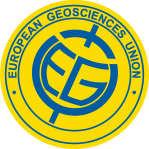 Thought it might be time for a little update on how EGU’s been going for those of you who couldn’t make it (and a restaurant tip below for those who could).
Thought it might be time for a little update on how EGU’s been going for those of you who couldn’t make it (and a restaurant tip below for those who could).
There’s been some really good science on show, and while the inevitable timetable clashes have been highly frustrating, between a bit of rushing around and planning with others everything has just about fallen into place. Obviously this is only really going to represent what I saw (there’s 20-30 concurrent sessions all day, every day).
My particular interests have been pretty well served so far, although the physical volcanology is a little thin on the ground, and the turbidity current stuff later in the week also looks a bit sparse.
There were a couple of sessions on natural hazard modelling, and volcanic vent and eruption dynamics on Monday (run concurrently… grrr….), in which some really lovely examples of probabilistic hazard mapping and conditional frequency mapping (something I’m applying to my own work on turbidites at the moment) were given. There were also presentations on VolcWorks and vHub – both collaborative works to bring wider access to modelling suites such as Titan2D, Tephra2 and similar. While VolcWorks is aimed at observatory workers wanting straightforward modelling and mapping workflows, vHub is being targetted more at the research and teaching end of things. Looks like they have huge potential.
Yesterday for me was dominated by the ‘Physics and Dynamics of magma ascent, emplacement, and deposition in volcanic systems’ session – something of a mammoth which was born of several smaller sessions (including the one I had been co-chairing) which ended up merged. It actually worked out really nicely, as the flow was retained with talks presented in a logical order.
Perhaps the most interesting talk of the day was by Ed Llewellin (Durham, UK) who presented some really nice work on the effects of crystal shape on magma viscosity. Coming from a granular modelling background myself it was an interesting demonstration that things known in one field are not necessarily well considered in others. The presentation made a convincing case that increasing aspect ratios of crystals in magmas can cause 10-fold increases in bulk viscosity compared to assumed spherical crystals. That obviously has huge implications for eruption dynamics assumptions, and with the mineral dependence of crystal shape, presumably we’re going to see a tranche of work on this in the future looking at the effects of different magma chemistries and cooling histories on crystal shape-derived viscosity changes.
I think my favourite find of the day, however, was down in the basement poster halls, where adjacent posters by Steffi Burchardt and Val Troll (both of Uppsala University, Sweden) presented the analyses of the ‘restingolites’ formed in the El Hierro eruption of 2011. I covered these eruptions in some detail, and briefly mentioned these funny old blocks last year, which were found floating to the surface at the ‘jacuzzi’ – a hot pool above the active submarine vent. They have a number of notable features – They have a dark basaltic crust, but highly vesicular folded white internal structure. There’s a collection of photos of some of these things here.
The two-tone folded structures are weird. The striking two-tone nature (indicating two very separate rock types) is weird. It turns out that things get far, far weirder.
These restingolites contain fossils.
The white material is Cretaceous sediment containing marine microfossils. The Hierro activity was fed by a high-level magma chamber injected at the base of the sediment pile. Fragments of this sediment inevitably found themselves sinking within this basaltic magma. Troll and his many and various co-workers have modelled the process and found that after 10 days of submersion in basaltic melt, these enclaves of sediment had outgassed and vesiculated enough to become buoyant within the chamber and rise to the top, before being erupted. Hence you get a vesiculated high-temperature metasediment containing microfossils, mingling textures, and surrounded by a basaltic crust. Awesome.
Fossil bearing pumice material is a first for me, and now I desperately want to get hold of some as a teaching sample.
There’s more info and pictures available here and no doubt more to come in the future.
In non-conference related news the Vienna Natural History Museum is great, with a beautifully presented and impressive mineral collection. Found some lovely little restaurants and bars serving the beer, sauerkraut, sausages, stews and dumplings we all love, but these were somewhat put in the dark by last nights visit to the Schweizenhaus in Prata. After a slightly creepy walk through the empty carnival grounds, we were greeted with a place specialising in roast pork and Czech beer. I would wax lyrical, but I think this picture probably does it justice. If you’re in Vienna at any time I highly recommend it.





Dude, I live in Vienna right near the city center. I’m meeting some friends that are at EGU tomorrow for beer and food, you want to join?
Ah, would love to but already meeting some people. Well see if I can sort something.
unfortunately I’ve seen too late your post “lifecycle of a postdoc”… otherwise I would have met you in person! All the best! from a fixed term postdoc in Vienna